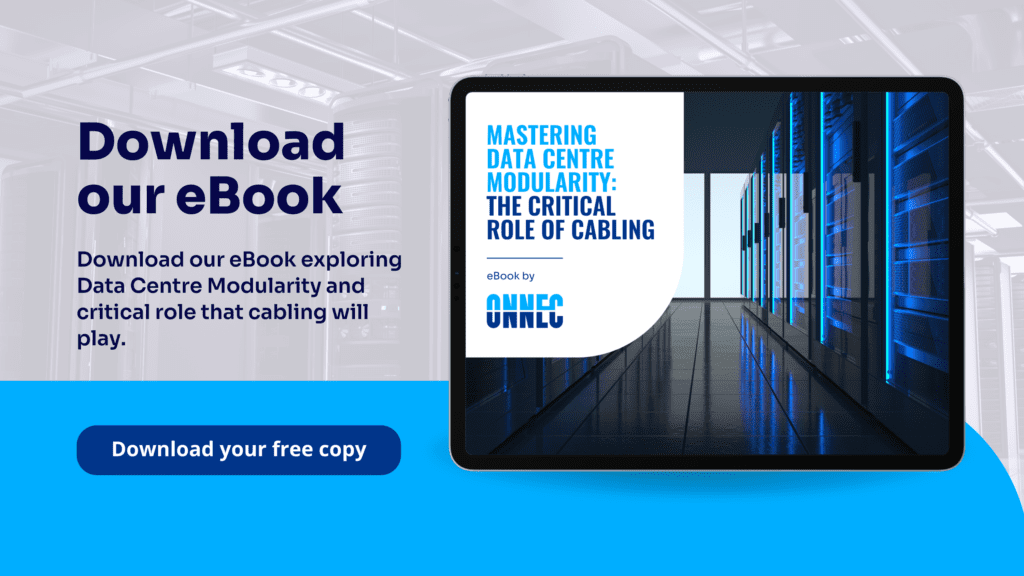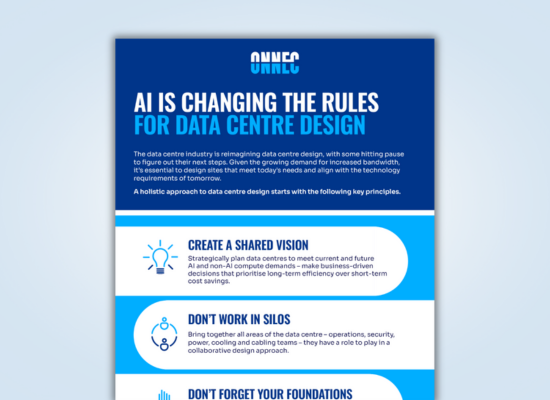
Modularity 2.0: A New Era for Flexible Data Centres
Over the last year, most data centre operators have been wrestling with one ongoing challenge; keeping up with ever-growing demand. With AI adoption surging, alongside growing workloads caused by streaming and cloud-based gaming, data centres need to adapt and become more efficient – delivering an IT infrastructure with flexibility and interchangeability built in.
Operators need to prolong the life of data centres or adapt, which will require them to replace hardware more regularly. Challenges like ineffective infrastructure and bad cabling hinder operators in adapting to changing workloads, preventing data centres from easily swapping out hardware to adapt to changing demand. Little thought is given to cabling and infrastructure. Operators need to become more flexible, but this requires a new approach that redefines what we mean by modularity.
Surging Demand Creates Challenges
This increased demand has created three clear challenges for operators: a rapid increase in the need for AI-related data centre capacity, a construction slowdown, and the prolonged operational lifespan of hardware.
As these challenges persist, data centre operators will need to conduct rapid hardware refreshes more frequently to adopt GPU-powered racks. This means in the future, operators must think differently about how to design data centres to be more adaptable. Operators will need to embrace a new kind of modularity to get ahead of problems that limit interchangeability, such as bad cabling, poor installation and resource shortages. Failure to do so will put new or existing data centres at increased risk of falling into disarray and requiring early refreshes.
Unravelling Cabling Complexities
Cabling and infrastructure problems that limit interchangeability start in the design phase due to a focus on power and cooling, rather than anticipating future changes in demand. As a result, “bad” cabling can lead to connectivity issues, data corruption, and downtime. This bad cabling is also much more expensive to replace than proper installation. Inflexible cabling may also require replacement within three years as data centres evolve, rather than its expected 10–15-year lifespan.
Cabling is critical for embracing the new kind of modularity required for modern DCs. Modularity used to be about building DCs from prefabricated modules/containers, aiming for quicker construction. However, this didn’t always help operators scale, and many high-profile hyperscalers like Google and Microsoft moved away from this approach.
Today, we need to reimagine modularity as the foundation of interchangeable and connected infrastructure. It’s not just about “Lego brick” containers structures, but constructing modular IT infrastructure with plug-and-play hardware, emphasising flexibility for frequent refreshes. Cabling must become the foundation that facilitates this flexibility. It cannot be overlooked.
‘New’ Modularity
To achieve this new modularity, operators must take a more holistic approach to planning, and ensure cabling best practices are followed. This will allow operators to adopt a modern approach to building modular IT infrastructure where interchangeability and connectivity are foundational.
But for existing sites, it can be difficult to create interchangeable infrastructure. A good starting point is creating a digital twin of the data centre to understand the infrastructure, cabling and complexities. This enables operators to streamline and standardise by introducing shorter cabling and reducing the number of connections.
Cabling is key for modularity – it’s the foundation that gives a site the flexibility it needs over its lifespan. When best practice is followed, operators can seamlessly upgrade hardware as needed to deliver AI-compute and cater to future workloads. This means sites can stay competitive for longer—with less waste, and more efficiency.
To learn more about the five best practice cabling principles to deliver a new kind of modularity, download our free eBook today.



